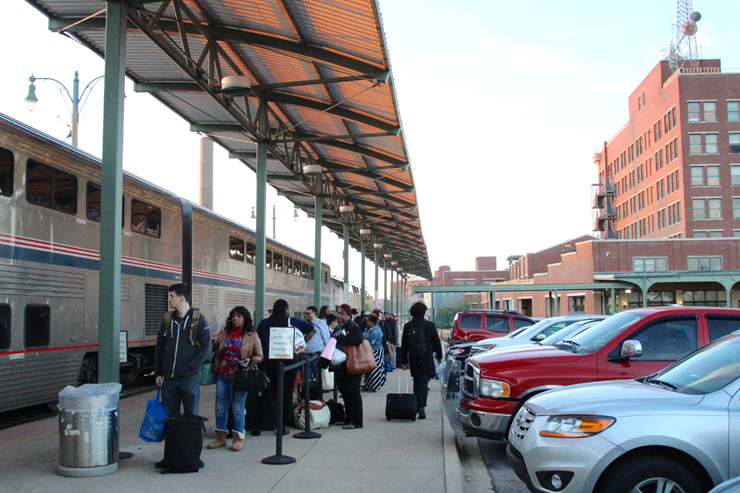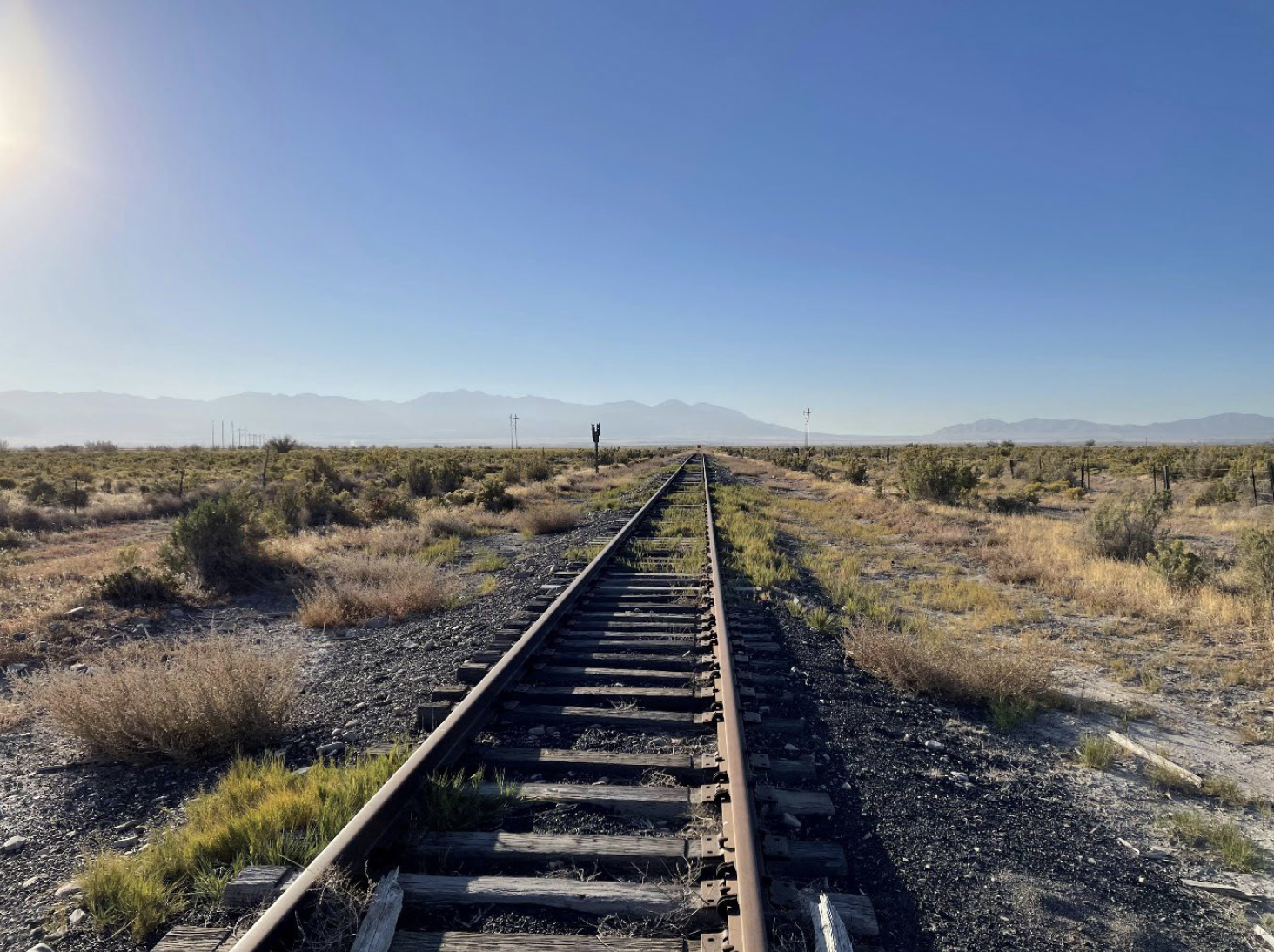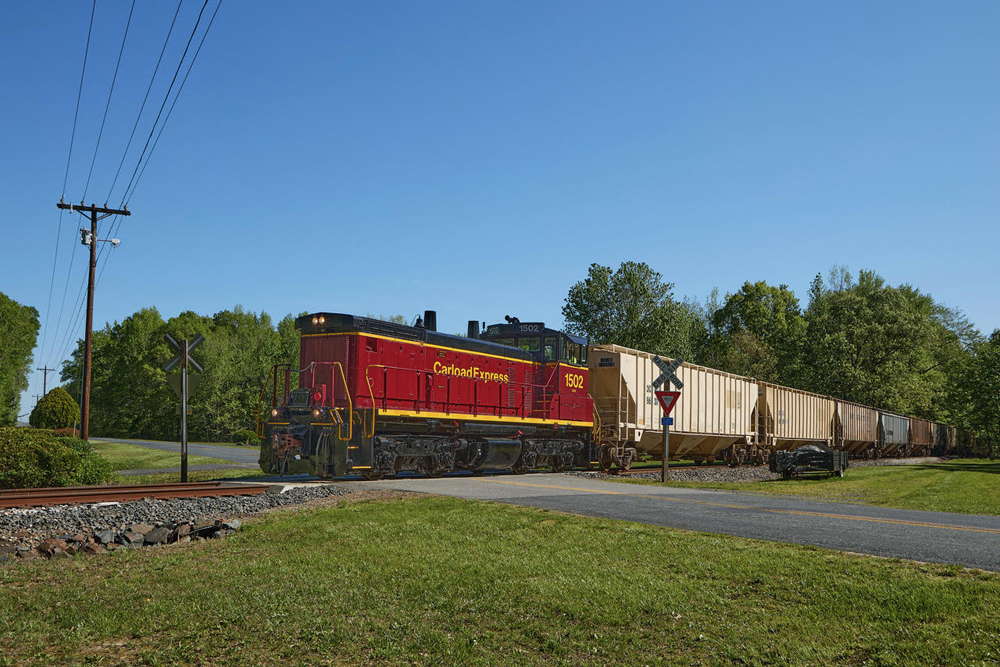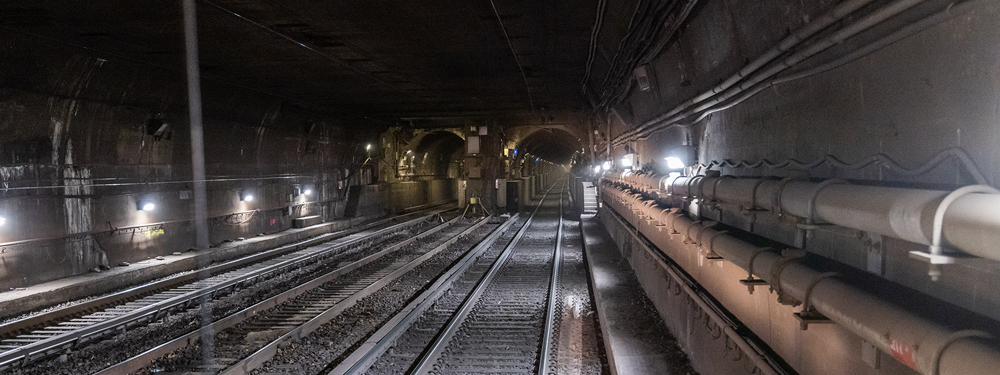NASHVILLE, Tenn. — Extending Illinois-sponsored trains from Carbondale, Ill., to Memphis, Tenn., and establishing a route between Nashville and Atlanta were ideas suggested by an Amtrak representiative to a Tennessee legislative committee this week.
As first reported in the Nashville Tennessean, Amtrak Senior Director of Government Affairs Ray Lang’s appearance Tuesday before the Tennessee House Transportation Committee was meant to kick off conversations with states and communities that currently have little or no Amtrak service as discussions with Congress over the company’s reauthorization begin.
Amtrak President Richard Anderson and Senior Executive Vice President and Chief Commercial Officer Stephen Gardner have repeatedly said that they want to begin serving shorter-distance corridors with fast, frequent daytime trains, but a major impediment is the lack of federal operating and capital funds under current Fixing America’s Surface Transportation Act provisions.
The company has yet to publicly unveil specific changes it seeks in new legislation, but is making outreach efforts to enlist future support from states now underserved by outlining what routes might be viable, Amtrak spokesman Marc Magliari tells Trains News Wire.
“We are also talking to current state partners regarding how additional frequencies might be implemented,” says Magliari.
He notes that the daytime southbound Chicago-Carbondale, Ill., Saluki and northbound Illini would be relatively easy to extend because trained Amtrak crews already run the overnight City of New Orleans on the same Canadian National tracks. But the states of Kentucky and Tennessee would have to shoulder any additional operating, equipment, and rail infrastructure costs because the route is under 750 miles.
For possible service to Atlanta, Lang told the legislators that new Tennessee stations would have to be constructed in Nashville, Murfreesboro, Tullahoma, and Chattanooga and the state “could be on the hook for several million dollars a year” in operating expense.
Intercity trains stopped at Nashville’s former Union Station, now a hotel, until Amtrak discontinued the Chicago-Miami Floridian in October 1979 budget cuts, but the company never operated regular service over CSX Transportation’s ex-Louisville and Nashville rails to Atlanta. That 285-mile route was last served in 1971 by a coach-only remnant of the line’s overnight Georgian, which was scheduled for a seven-hour trip.
“This is the first we’re seeing of this,” CSX State Government and Community Affairs VP Jane Covington told the committee members. The Tennessean reported that she understood Amtrak was there “to simply gauge the state’s interest,” but Covington warned the lawmakers that “introducing passenger trains to heavily used freight lines will be a complex, costly process,” and, “we want to make sure you do it in a way (that) doesn’t backfire and divert freight off the rails and onto the highway.”















Landon Rowell, no storage for Amtrak trains in Cleveland, to extend the train it would have to go to Toledo for storage, overnight. Plenty of room at Toledo Union Central Station for trains. Toledo is a very good Amtrak stop.
I support the extension of the southbound Saluki to Memphis and the northbound Illini from Memphis, winning opportunity for both states to do this and for travelers.
There are other non-rail issues that prevent a rail passenger connection between Chattanooga and Atlanta. The biggest is getting water from Tennessee River and piping it to Atlanta. That was used to hold previous attempts to build a fast (125 mph) line hostage which results in the idea dying before being fully investigated.
Pros and Cons all around on these proposals. One thing to emphasize:
Those who use Amtrak who really need it live in out-of-the-way places not well served by other modes, not so much those who live in the bigger cities who have tons of other options. Connecting to a big city like Atlanta is good, but then extending the route into a more rural area and smaller population cities where people have fewer options means people are more likely to use the service. I live not far from Chattanooga close to the middle of Amtrak’s biggest hole in the east. I know I’d use it and know others who would also.
Extending Illini/Saluki to Memphis is much a much shorter and less expensive addition than Florida-New Orleans. The added ridership generated by having a second large city (Memphis) on these trains’ population base my add enough revenue to operate the service with little or no additional subsidy. Also, I am not suggesting that HAS to spend the night in Memphis as the City could still run overnight to/from Chicago, at least during the experimental time. This would only be discontinued if most people choose the overnight stay.
Speaking of extending a train to add significantly to its population base, I would suggest extending the Carl Sandberg to Kansas City. This would provide a Chicago-KC schedule opposite that of the Southwest Chief, though on a different route.
Extending the Pennsylvanian to Cleveland has potential also.
By the way, I am not against New Orleans-Florida, but I don’t see this as either/or.
Before adding that train, Amtrak needs to restore some kind of service from Jax to NOLA. As it is, if there is a disruption in the Savannah, Amtrak has no way out of Florida.
DON – So someone who wants to get from southern Illinois to Northern Mississippi needs to lay over in Memphis, adding ten hours to a six-hour trip?
BTW my wife did take the train the whole route – Milwaukee to Chicago, Chicago to NOLA. When she wakes up I’ll ask her opinion. Second thought, she’d need to be wide awake for several hours even to process the question, would you like a 20 hour trip to be 3o hours?
BTW how’d you like to be the conductor trying to get the train moving while the half-awake stragglers straggle out of the hotel just on time or not on time.
Charles: even more maddening, MARTA goes right next to Peachtree St. station, but there is no stop!.
…and +1 for the “split the City of NOLA at Memphis” idea.
Georgia has studied Atlanta to Chattanooga as HSR and maglev over a bunch of routes. None of this ever made any sense as Chattanooga is a smaller city. It only begins to make sense if you connect some bigger dots like Nashville.
Trying to do passenger service on this route on the old “laid on the dirt” 19th century alignments make almost no sense at all. Can you beat the 7:00 running time of the last passenger service on the route? Doubtful. I don’t know of any Amtrak routes running faster than in 1971 that haven’t had significant $$ spent on them.
It’s even worse in the hilly parts of the south. In the 20th century, the RRs in the NE spend lots of bucks straightening, flattening and smoothing their routes. Nothing like this happened in the south. Consequently, trying to put on passenger trains that compete with 70mph interstates without spending a small fortune is a fools errand.
If you have the money, better to do a greenfield, HSR alignment. Using some exiting urban ROW to join the rural HSR sections might make sense. Perhaps there should be a Chicago, Indy, Louisville, Nashville, Chattanooga, Atlanta route study… Lots of “better than flying” OD pairs in there.
At least they’re talking and creating a dialogue including these comments. I wish they would bring back the Floridian but that’s my own opinion.
Under PSR, heavy used rail line costly and complex means forget it. As to Amtrak extending a day trip to Memphis not as big s deal.
What’s a 10 hour layover in Memphis on a 20 hour schedule? Anyone who really wants to get to Chicago or NOLA from points on the other side of Memphis has faster options than the train already. Anyone who is hell-bent on taking the train for leisure gets more “look out the window” time! It’s a win-win!
Penelope Vinson I agree with your idea that it needs to be on separate tracks, entirely to work. Brightline in FLA is a good example, but, as someone who isn’t familiar with the local landscape, I would bet building the Brightline vs. building a line south from Nashville is apples and oranges. The tallest hill in Florida is where ever the last dump truck just unloaded it’s load of gravel…
FWIW: relatives recently flew into Ft. Laud and caught Bright/Virgin to Miami…were impressed. So, does quality service sell or not? Seems obvious for both passenger and freight.
Some are suggesting that no through travelers would spend the night in Memphis. Others support for splitting the city at Memphis. The best way to find out is to do the experiment. Continue the City overnight between Chicago and Memphis while extending Illini/Saluki service to Memphis. Give people a choice and see what they do.
EAS, essential air services is where money is wasted. Take that money. And use it. Money, millions of dollars is given to small airports that have lost air service to move passengers. This wasted tax payer money. End the waste, and the EAS.
Gotta make a Class 1 furious when Amtrak goes around shopping access to their rails without their knowledge.
And Amtrak wonders why they cant get good dispatching?
There will need to be separate tracks for passenger trains for successful, punctual and efficient operations. Florida East Coast is reaping the benefits of having its line re-double tracked by Brightline. The same would apply to other railways including CSX with its lines radiating from Nashville.
Like highways and airports, there are needs for increased capacity on railways. The Toronto – Vancouver ‘Canadian’ is the worse scenario for inefficient passenger train operation even for cruise trains.
In planning new passenger train services, separate trackage on busy routes should be included among the infrastructure for efficient operation.
Amtrak doing what it’s best at: extracting subsidies from gullible governments.
ANDREW CHANDLER – You say that MARTA doesn’t connect to Atlanta Amtrak. MARTA does connect to Atlanta airport. What does that tell you, that an airport is more convenient to local transit than Amtrak is.
Upon landing from a flight from ATL to BNA last May, the cabin attendant said “Thank you for spending the last three minutes with us!” Meaning of course 63 minutes with the time change Eastern Time to Central Time. Amtrak will never get the end points. Intermediate points? Chattanooga west to Nashville or south to Atlanta sounds doable with multiple frequencies. LANDON: Rail fails at fewer than three trains a day. Overnighting at a hotel on an Amtrak LD (Memphis, etc.) is simply a nonstarter that was Fred Frailey’s single horrid idea in an otherwise brilliant career. This is something out of the 19th Century.
Extending the Illini/Saluki to Memphis may not cost much. Carbondale to Memphis is only 219 miles and the train currently only serves one large city. Adding Memphis may bring in about as much revenue as cost.
Regarding an overnight stop in Memphis for the City, I would propose extending the Illini/Saluki and then modifying the schedule of the City a little to improve hours of service to Memphis. Add links to the web site to make it convenient for through passengers who don’t want to travel at night to book a hotel near the Memphis station. Amtrak could quickly find out how many want to spent the night in Memphis vs spend the night on the train.
Similar experiments could also be done elsewhere. For example, if the Lake Shore ran during the day between Chicago and Buffalo and overnight east of Buffalo, through passengers could choose between spending the night in Buffalo and continuing on and Empire Corridor train and spending the night on the Lake Shore. In addition, Toledo and Cleveland could finally get service at a reasonable hour. Such experiments could help Amtrak management figure out where the best markets are.
True Mr. Barrett this EAS serves even a smaller percentage of passengers than Amtrak & bus. Medium size cities go out of their way to keep major air carriers, Mpls/St.Paul has turned the airport into a shopping center just to subsidize Delta so they keep the airport a Hub from old NWA days.
Perhaps Amtrak should “break” the CITY OF NEW ORLEANS into two trains; each departing from Memphis 800A for Chicago and New Orleans, and each arriving at Memphis 1000P from Chicago and New Orleans. That idea came from Fred Frailey.
Passenger trains are good for railroads; they make railroads visible. Visibility is important for a very cynical reason: invisible institutions can’t explain their side of the story.
That said, the regulatory system needs to change. Passenger trains should be operated by non-profit organizations. That way, railroads would benefit from capital investments in passenger service.